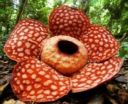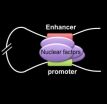(Press-News.org) Chemical reactions on the surface of metal oxides, such as titanium dioxide and zinc oxide, are important for applications such as solar cells that convert the sun's energy to electricity. Now University of Washington scientists have found that a previously unappreciated aspect of those reactions could be key in developing more efficient energy systems.
Such systems could include, for example, solar cells that would produce more electricity from the sun's rays, or hydrogen fuel cells efficient enough for use in automobiles, said James Mayer, a UW chemistry professor.
"As we think about building a better energy future, we have to develop more efficient ways to convert chemical energy into electrical energy and vice versa," said Mayer, the corresponding author of a paper about the discovery in the June 8 edition of Science.
Chemical reactions that change the oxidation state of molecules on the surface of metal oxides historically have been seen as a transfer solely of electrons. The new research shows that, at least in some reactions, the transfer process includes coupled electrons and protons.
"Research and manufacturing have grown up around models in which electrons moved but not atoms," Mayer said. The new paper proposes a different model for certain kinds of processes, a perspective that could lead to new avenues of investigation, he said.
"In principle this is a path toward more efficient energy utilization."
Coupling the transfer of electrons with the transfer of protons could help reduce the energy barriers to chemical reactions important in many technologies. For example, using solar energy to make fuels such as hydrogen requires that electrons and protons be coupled.
The new perspective also could be important for photocatalytic chemical processes, including those designed for wastewater remediation or to create self-cleaning surfaces, such as the outside of buildings in areas with heavy industrial air pollution.
The research focused specifically on nanoparticles, measured in billionths of a meter, of titanium dioxide and zinc oxide. Titanium dioxide is the most common white pigment, used in paints, coatings, plastics, sunscreen and other materials. Zinc oxide also is used in pigments, coatings and sunscreens, as well as white athletic tape, and also is used in the manufacture of rubber, concrete and other materials. Nanocrystals were used to closely examine chemical processes at the material's surface.
Mayer said the goal of the work is to get those working in various technological areas involving metal oxides to think in different ways about how those technologies work and how to make them more efficient.
The work also could prove important in finding more efficient ways to fuel vehicles of the future, he said. Fuel cells, for example, transform atmospheric oxygen into water by adding both electrons and protons. Coupling those added electrons and protons could make fuel cells more efficient and allow replacement of costly materials such as platinum.
"Chemical fuels are very useful, and they're not going away," Mayer said. "But how do we utilize them better in a non-fossil-fuel world?"
INFORMATION:
Co-authors of the Science paper are Joel Schrauben, a UW postdoctoral researcher; Rebecca Hayoun, who since has received a doctorate from the UW and is working in the private sector; UW graduate students Carolyn Valdez and Miles Braten; and Lila Fridley, an undergraduate at the Massachusetts Institute of Technology who participated as a summer researcher at UW.
The work was funded by the UW, the American Chemical Society Petroleum Research Fund, the National Science Foundation through the UW-based Center for Enabling New Technologies through Catalysis, and the U.S. Department of Energy.
For more information, contact Mayer at 206-543-2083 or mayer@uw.edu.
New twist on old chemical process could boost energy efficiency
2012-06-08
ELSE PRESS RELEASES FROM THIS DATE:
Parasitic plants 'steal' genes from their hosts
2012-06-08
New research published today in BioMed Central's open access journal BMC Genomics reveals that the Malaysian parasitic plant Rafflesia cantleyi, with its 50cm diameter flowers, has 'stolen' genes from its host Tetrastigma rafflesiae. Analysis of these genes shows that their functions range from respiration to metabolism, and that some of them have even replaced the parasites own gene activity.
Vertical gene transfer is that between parents and their offspring, while horizontal gene transfer is the movement of genes between two different organisms. Bacteria use horizontal ...
Engineered robot interacts with live fish
2012-06-08
A bioinspired robot has provided the first experimental evidence that live zebrafish can be influenced by engineered robots.
Results published today, 8 June, in IOP Publishing's journal Bioinspiration and Biomimetics, provide a stepping stone on the path to using autonomous robots in an open environment to monitor and control fish behaviour.
In the future, water-based robots could potentially contribute to the protection of endangered animals and the control of pest species.
The robot, created by researchers from Polytechnic Institute of New York University and ...
Manipulating chromatin loops to regulate genes may offer future treatments for blood diseases
2012-06-08
In exploring how proteins interact with crucial DNA sequences to regulate gene activity, researchers have shed light on key biological events that may eventually be manipulated to provide new disease treatments.
Within a cell's nucleus, regulatory elements in DNA called promoters and enhancers communicate with each other in carrying out gene activity, often over large genomic distances, hundreds of thousands of chemical bases apart from each other in chromosomes. As these elements physically contact each other, the intervening DNA sequences bend into loops made of chromatin ...
Immune system 'circuitry' that kills malaria in mosquitoes identified
2012-06-08
Researchers at the Johns Hopkins Malaria Research Institute have, for the first time, determined the function of a series proteins within the mosquito that transduce a signal that enables the mosquito to fight off infection from the parasite that causes malaria in humans. Together, these proteins are known as immune deficiency (Imd) pathway signal transducing factors, are analogous to an electrical circuit. As each factor is switched on or off it triggers or inhibits the next, finally leading to the launch of an immune response against the malaria parasite. The study was ...
Pre-existing problems
2012-06-08
In a critical step that may lead to more effective HIV treatments, Harvard scientists have found that, in a small number of HIV patients, pre-existing mutations in the virus can cause it to develop resistance to the drugs used to slow the progression of the disease.
The finding is particularly important because, while researchers have long known HIV can develop resistance to some drugs, it wasn't understood whether the virus relied on pre-existing mutations to develop the resistance, or if it has to wait for those mutations to occur. By shedding new light on how resistance ...
Should spinal manipulation for neck pain be abandoned?
2012-06-08
The effectiveness of spinal manipulation divides medical opinion. On bmj.com today, experts debate whether spinal manipulation for neck pain should be abandoned.
Spinal manipulation is a technique that involves the application of various types of thrusts to the lumbar spine (lower back) or cervical spine (neck) to reduce back pain, neck pain and other musculoskeletal conditions.
Neil O'Connell and colleagues argue that cervical spine manipulation "may carry the potential for serious neurovascular complications" and that the technique is "unnecessary and inadvisable." ...
Patients suffering from pre-diabetes at potential future risk of stroke
2012-06-08
Millions of people suffering from pre-diabetes may be at a higher risk of stroke, a study published on bmj.com today suggests.
Pre-diabetes is characterised by higher than normal blood glucose levels that, if left untreated, develops into type 2 diabetes. The scale of the problem is enormous and growing, with an estimated 79 million people in the US and 7 million people in the UK affected.
People with pre-diabetes also harbour the same vascular risk factors as people with type 2 diabetes, such as high blood pressure, high cholesterol and obesity, but its effect on ...
By adding VSL#3 probiotic to traditional therapies UC patients can improve remission rates
2012-06-08
GAITHERSBURG, MD, June 7 – As one of the few probiotics with medical food designation for specific illnesses, VSL#3® has been the subject of a collection of more than 80 studies that have demonstrated its use in the dietary management of IBS, ulcerative colitis, and an ileal pouch. Ulcerative colitis patients, in particular, have been shown to benefit from adding VSL#3 medical food to their prescription drug regimen. One particular study shows that the combination of VSL#3 and traditional drug therapy can improve remission rates over drug therapy alone by 10 to 17 percent, ...
Haematopoietic stem cell transplantation increases survival in systemic sclerosis patients
2012-06-08
Berlin, Germany, June 7 2012: Initial results from an international, investigator-initiated, open label phase III trial were presented at EULAR 2012, the Annual Congress of the European League Against Rheumatism. Data indicate that haematopoietic stem cell transplantation (HSCT) results in better long term survival than conventional treatment for patients with poor prognosis early diffuse cutaneous systemic sclerosis.
The ASTIS (Autologous Stem Cell Transplantation International Scleroderma) trial enrolled more than 150 patients between 2001 and 2009, and randomised ...
Mapping genes: Mayo Clinic finds new risk factors for neurodegenerative diseases
2012-06-08
JACKSONVILLE, Fla. — Using a new and powerful approach to understand the origins of neurodegenerative disorders such as Alzheimer's disease, researchers at Mayo Clinic in Florida are building the case that these diseases are primarily caused by genes that are too active or not active enough, rather than by harmful gene mutations.
In the June 7 online issue of PLoS Genetics, they report that several hundred genes within almost 800 brain samples of patients with Alzheimer's disease or other disorders had altered expression levels that did not result from neurodegeneration. ...


